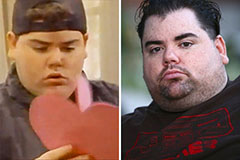The application of 1/3 MHz ultrasound in the realm of medicine has shown remarkable potential for accelerating tissue healing. This therapeutic modality utilizes low-intensity ultrasound vibrations to stimulate cellular repair within injured tissues. Studies have demonstrated that treatment to 1/3 MHz ultrasound can promote blood flow, reduce inflammation, and accelerate the production of collagen, a crucial protein for tissue remodeling.
- This non-invasive therapy offers a complementary approach to traditional healing methods.
- Experimental data suggest that 1/3 MHz ultrasound can be particularly effective in treating multiple ailments, including:
- Sprains
- Fracture healing
- Chronic wounds
The targeted nature of 1/3 MHz ultrasound allows for safe treatment, minimizing the risk of harm. As a relatively well-tolerated therapy, it can be incorporated into various healthcare settings.
Leveraging Low-Frequency Ultrasound for Pain Relief and Rehabilitation
Low-frequency ultrasound has emerged as a effective modality for pain alleviation and rehabilitation. This non-invasive therapy utilizes sound waves at frequencies below the range of human hearing to stimulate tissue healing and reduce inflammation. Studies have demonstrated that low-frequency ultrasound can be beneficial in treating a variety of conditions, including muscle pain, joint stiffness, and tendon injuries.
The theory by which ultrasound offers pain relief is complex. It is believed that the sound waves create heat within tissues, enhancing blood flow and nutrient delivery to injured areas. Furthermore, ultrasound may stimulate mechanoreceptors in the body, which transmit pain signals to the brain. By altering these signals, ultrasound can help decrease pain perception.
Possible applications of low-frequency ultrasound in rehabilitation include:
* Enhancing wound healing
* Boosting range of motion and flexibility
* Strengthening muscle tissue
* Decreasing scar tissue formation
As research progresses, we can expect to see an expanding understanding of the therapeutic benefits of low-frequency ultrasound in pain relief and rehabilitation. This non-invasive and relatively safe modality holds great potential for improving patient outcomes and enhancing quality of life.
Unveiling the Therapeutic Potential of 1/3 MHz Ultrasound Waves
Ultrasound treatment has emerged as a effective modality in various medical fields. Specifically, 1/3 MHz ultrasound waves possess remarkable properties that point towards therapeutic benefits. These low-frequency waves can reach tissues at a deeper level than higher frequency waves, allowing targeted delivery of energy to specific areas. This characteristic holds significant potential for applications in ailments such as muscle pain, tendonitis, and even wound healing.
Studies are currently underway to fully understand the mechanisms underlying the therapeutic effects of 1/3 MHz ultrasound waves. Preliminary findings indicate that these waves can enhance cellular activity, reduce inflammation, and improve blood flow.
Clinical Applications of 1/3 MHz Ultrasound Therapy: A Comprehensive Review
Ultrasound intervention utilizing a frequency of 1/3 MHz has emerged as a potential modality in the field of clinical practice. This extensive review aims to examine the diverse clinical applications for 1/3 MHz ultrasound therapy, offering a concise analysis of its actions. Furthermore, we will explore the outcomes of this intervention for multiple clinical highlighting the recent research.
Moreover, we will discuss the potential benefits and limitations check here of 1/3 MHz ultrasound therapy, providing a unbiased outlook on its role in current clinical practice. This review will serve as a essential resource for healthcare professionals seeking to expand their comprehension of this treatment modality.
The Mechanisms of Action of 1/3 MHz Ultrasound in Soft Tissue Repair
Low-intensity ultrasound at a frequency equal to 1/3 MHz has emerged to be an effective modality for promoting soft tissue repair. The processes by which it achieves this are still being elucidated. One mechanism involves the generation of mechanical vibrations that stimulate cellular processes like collagen synthesis and fibroblast proliferation.
Ultrasound waves also affect blood flow, promoting tissue perfusion and carrying nutrients and oxygen to the injured site. Furthermore, ultrasound may change cellular signaling pathways, regulating the creation of inflammatory mediators and growth factors crucial for tissue repair.
The specific mechanisms underlying the therapeutic effects of 1/3 MHz ultrasound in soft tissue repair are still under research. However, it is clear that this non-invasive technique holds possibilities for accelerating wound healing and improving clinical outcomes.
Optimizing Treatment Parameters for 1/3 MHz Ultrasound Therapy
The efficacy of vibrational therapy at 1/3 MHz frequency is profoundly influenced by the meticulously chosen treatment parameters. These parameters encompass variables such as exposure time, intensity, and waveform structure. Strategically optimizing these parameters promotes maximal therapeutic benefit while minimizing potential risks. A comprehensive understanding of the biophysical interactions involved in ultrasound therapy is essential for achieving optimal clinical outcomes.
Numerous studies have highlighted the positive impact of precisely tuned treatment parameters on a diverse array of conditions, including musculoskeletal injuries, wound healing, and pain management.
Ultimately, the art and science of ultrasound therapy lie in selecting the most appropriate parameter combinations for each individual patient and their unique condition.
 Michael Bower Then & Now!
Michael Bower Then & Now! Katie Holmes Then & Now!
Katie Holmes Then & Now! Jurnee Smollett Then & Now!
Jurnee Smollett Then & Now! David Faustino Then & Now!
David Faustino Then & Now! Melissa Sue Anderson Then & Now!
Melissa Sue Anderson Then & Now!